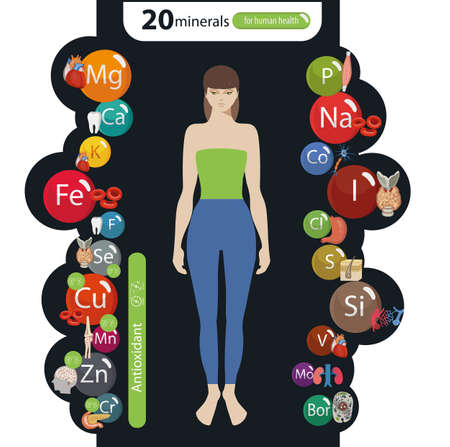Understanding Midlife Stress in the UK
Midlife in Britain brings with it a distinct set of stressors, reflecting both cultural expectations and the evolving pressures of modern society. For many Brits entering their forties and fifties, the balancing act between professional responsibilities and personal life becomes more pronounced. The concept of work-life balance is frequently discussed in British workplaces, yet achieving it remains an ongoing challenge as career ambitions coincide with increasing workloads and organisational restructuring. On top of this, middle-aged Britons often find themselves sandwiched between caring for ageing parents and supporting teenage or young adult children, intensifying emotional and practical demands.
Family expectations can be particularly acute in the UK, where traditional values around providing stability and support persist. Economic pressures also weigh heavily: concerns over job security, pension planning, and the rising cost of living—especially housing—add another layer to midlife stress. The aftermath of events like Brexit and global economic shifts have left many feeling uncertain about their financial future. These unique British stressors collectively shape the experience of midlife and fuel a growing interest in effective, culturally relevant strategies for managing stress while striving to maintain vitality and youthfulness.
2. Mental Health Awareness and Openness
In recent years, British society has undergone a notable transformation in its approach to mental health, particularly for those navigating midlife. Where once the traditional British “stiff upper lip” prevailed, there is now a growing openness to discussing stress, anxiety, and emotional wellbeing. This cultural shift is especially significant for individuals in their forties and fifties, who often face unique pressures from work, family, and the changing nature of ageing.
Increasingly, conversations about mental health are taking place not only in private but also in workplaces, community groups, and national media. The importance of addressing stress proactively—rather than suffering in silence—has become a mainstream topic. This evolution can be credited in part to high-profile campaigns led by public figures, as well as grassroots movements encouraging people to share their experiences.
The Role of the NHS and Community Resources
The National Health Service (NHS) has played a pivotal role in supporting this new wave of mental health awareness. In response to growing demand, the NHS now offers a variety of resources aimed at helping midlifers manage stress and maintain youthful vitality. These include talking therapies, online self-help tools, and local support groups tailored to different age groups and challenges.
| NHS Resource | Description | Accessibility |
|---|---|---|
| Talking Therapies (IAPT) | Cognitive behavioural therapy and counselling for stress management | Self-referral or GP referral; available in most regions |
| Every Mind Matters | Online advice and personalised action plans for wellbeing | Free online access |
| Local Support Groups | Peer-led sessions for sharing experiences and coping strategies | Community centres or NHS directories |
The Impact on Midlife Wellbeing
This enhanced focus on openness and resource accessibility is empowering more Britons in midlife to take proactive steps towards managing stress. By breaking down barriers around mental health discussions and normalising help-seeking behaviour, these initiatives contribute not only to better emotional resilience but also to preserving a sense of youthfulness and optimism as people age.

3. Traditional and Modern Stress-Relief Techniques
When it comes to managing stress in midlife, the British have a unique blend of tradition and innovation. Classic remedies remain central to daily routines; for many, nothing beats the calming ritual of brewing a ‘cuppa’. Whether it’s a strong builder’s tea or a delicate Earl Grey, pausing for tea offers not only a physical break but also a chance to reconnect with oneself or have a chat with friends—an understated but powerful form of social support.
Equally cherished is the restorative effect of countryside walks. The UK’s rolling hills, ancient woodlands, and coastal paths provide a peaceful escape from urban pressures. Walking in nature—often referred to as ‘rambling’—is more than exercise; it is a mindful practice that encourages reflection, deep breathing, and appreciation of the changing seasons. This connection to the land has long been woven into British culture as an antidote to stress and a way to feel youthful vitality.
Alongside these time-honoured approaches, contemporary methods have gained popularity among those navigating midlife pressures. Mindfulness meditation, often taught in community centres and workplaces, helps individuals cultivate presence and reduce anxiety. Yoga studios now dot city neighbourhoods, offering classes tailored for all ages and abilities. Many midlifers also seek professional support through therapy, which is increasingly destigmatised and accessible via the NHS or private practitioners. These modern techniques are often combined with traditional activities, creating a holistic approach that resonates with British values of balance and practicality.
4. Community & Social Support Networks
For many in the UK, midlife can bring a sense of isolation as social circles shift and family responsibilities evolve. British culture, however, provides a unique framework for stress management through its longstanding tradition of social clubs, voluntary groups, and local community events. These institutions not only offer companionship but also foster a sense of belonging and purpose, both of which are vital for mental wellbeing and maintaining youthful energy.
Participating in these networks allows individuals to share experiences, seek advice, and find emotional support among peers who understand the pressures of midlife. From the classic village pub quiz night to gardening societies and walking groups, these activities encourage regular social interaction, which research consistently links to reduced stress levels and improved health outcomes.
The Role of British Social Clubs & Voluntary Groups
Social clubs—whether centred around sports, arts, or hobbies—provide structured opportunities for engagement. Volunteering has also become an increasingly popular way for midlifers to connect with others while giving back to their communities. The table below outlines common examples and their benefits:
| Type | Example | Main Benefits |
|---|---|---|
| Sports Club | Bowls Club, Cricket Team | Physical activity, camaraderie, routine |
| Voluntary Group | Neighbourhood Watch, Food Bank Volunteer | Sense of purpose, new friendships, skill development |
| Cultural Society | Book Club, Historical Society | Mental stimulation, shared interests, conversation |
| Community Event | Village Fete, Pub Quiz Night | Local pride, intergenerational connection, fun atmosphere |
The Impact on Stress Management & Youthfulness
These community connections help buffer against stress by providing practical support—such as sharing resources or childcare—as well as emotional reassurance during challenging times. Being part of a supportive network encourages laughter and optimism, two factors closely associated with staying youthful in outlook and spirit. Importantly, embracing these British traditions not only combats loneliness but actively supports mental resilience throughout midlife.
5. Work-Life Balance: Policies and Practices
In the UK, the conversation around work-life balance has become central to strategies for stress management in midlife, particularly as it relates to maintaining a youthful perspective and good mental health. British workplaces have been noticeably adaptive, especially following the pandemic, embracing flexible working arrangements as a norm rather than an exception. Many organisations now offer flexitime, job sharing, and compressed hours, which allow midlife employees to tailor their schedules to better fit personal commitments—whether that’s caring for ageing parents, pursuing hobbies, or simply finding time for rest.
Remote Roles and Digital Integration
The rise of remote roles is another significant development. With advances in digital technology, more companies encourage or even expect some degree of home working. This shift has helped reduce commuting stress and given midlife workers greater autonomy over their daily routines. There’s also a growing awareness of the need for digital upskilling, with many firms providing training aimed specifically at helping older employees adapt comfortably to new tools.
Wellbeing Initiatives Tailored to Midlife Employees
Beyond flexibility, there’s an increasing focus on initiatives designed to support wellbeing among those in midlife. Examples include onsite mindfulness sessions, resilience workshops, access to mental health first aiders, and Employee Assistance Programmes (EAPs). Some larger employers have introduced ‘menopause-friendly’ policies or peer support groups recognising the unique pressures faced by this demographic. These measures not only address stress but also foster a culture where discussing mental health is normalised.
Impact on Youthfulness and Future Directions
The cumulative effect of these policies is a workplace environment that acknowledges the complexities of midlife and supports individuals in retaining vitality and engagement. As British businesses continue to innovate in this area—by listening to employee feedback and leveraging government guidance—the hope is that managing stress becomes less about coping and more about thriving, contributing to both personal youthfulness and professional longevity.
6. The Pursuit of Youthfulness
In Britain, conversations about ageing have steadily shifted over recent years, moving away from the pressure to ‘stay young’ towards a more nuanced appreciation of ‘ageing well’. While there’s no denying that British culture celebrates vibrancy and good health at any age, there is also a growing realism around what it means to live well through midlife and beyond.
Perspectives on Ageing in Britain
The British approach tends to favour subtlety over excess when it comes to maintaining youthfulness. There is a cultural inclination towards understated self-care—think brisk countryside walks, gardening, and regular trips to the local leisure centre—rather than extreme makeovers or drastic interventions. This reflects a societal recognition that ageing is natural, and that wellbeing comes from realistic lifestyle adjustments rather than chasing unattainable standards of youth.
Lifestyle Choices for Maintaining Vitality
Many in midlife Britain adopt practical strategies for sustaining vitality: balanced diets influenced by Mediterranean principles, moderate exercise regimes like swimming or cycling, and prioritising sleep hygiene. Social engagement remains key; joining clubs or volunteering is seen not only as a way to keep active but also as vital for mental health. There’s an understanding that stress management plays a central role in this equation—be it through mindfulness practices or simply making time for ‘a proper cuppa’ with friends.
Embracing Ageing Well
Increasingly, the conversation is less about defying age and more about adapting gracefully. The idea of ‘ageing well’ is embraced: focusing on physical and emotional resilience, accepting change, and nurturing intergenerational connections within families and communities. In essence, British midlifers are encouraged to pursue youthfulness not by resisting age, but by cultivating habits that foster long-term vitality and contentment—reminding us all that living well is ultimately more rewarding than simply appearing young.


